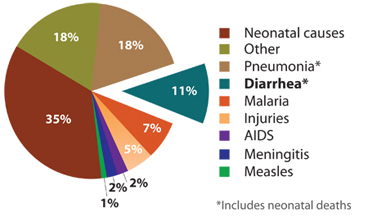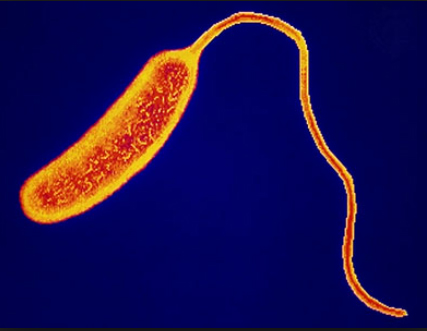2.3.1 Diarrhoeal diseases
Diarrhoea is a symptom of many waterborne diseases and is the cause of 11% of deaths among children aged under 5 across the world, with a reported total of 2195 deaths each day (Liu et al., 2012). The global major causes of death in children under 5 are shown in Figure 2.3.

Worldwide, 88% of diarrhoeal disease is attributable to unsafe water, poor hygiene and inadequate sanitation. In Ethiopia, 15% of all deaths are from diarrhoea, with the highest death rate among young children (World Life Expectancy, n.d.). Children, especially those under 5 years of age, are vulnerable to infection because they frequently put their unwashed fingers in their mouths.
One important example of a diarrhoeal disease is cholera. Cholera is an acute bacterial infection of the intestinal tract that produces watery diarrhoea. It is caused by the bacterium Vibrio cholerae (Figure 2.4) and causes severe loss of body fluids through diarrhoea, with the stool looking like rice-water. Without treatment, the disease can quickly lead to acute dehydration and death. Cholera is a worldwide problem, common in areas that lack basic sanitation. It can also be a problem in emergency situations (as you will learn in Study Session 14). It can be prevented by the provision of safe drinking water, effective sanitation and good hygiene behaviour, including food hygiene.

2.3 Common diseases associated with water in Ethiopia
